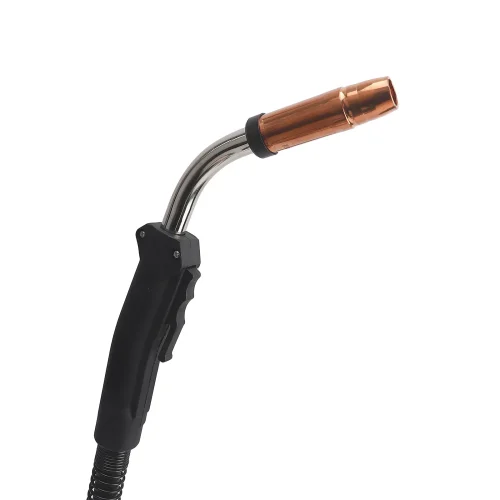A welding torch is a vital tool in the field of metalwork, used for joining various types of metals together through the process of welding. It is a handheld device that generates intense heat through a flame produced by a fuel gas and an oxidizer. This heat melts the metal pieces, allowing them to fuse together and form a strong bond. In this article, we will dive into the functions and proper usage of a welding torch, highlighting its benefits and application areas that customers often consider when making a purchase.
To begin with, let us explore the various components of a welding torch. The main elements include the handle, nozzle, mixing chamber, and gas valve. The handle provides a comfortable grip for the user, ensuring stability and control during operation. The nozzle is where the flame is emitted and can be adjusted to achieve specific flame characteristics, such as a concentrated or broad flame. The mixing chamber combines the fuel gas, such as acetylene, and the oxidizer, usually oxygen, in the correct ratio for optimal combustion. Lastly, the gas valve regulates the flow of the fuel gas and oxidizer to control the intensity of the flame.
Proper usage of a welding torch involves several essential steps. Firstly, it is crucial to check all connections and ensure they are secure before igniting the torch. Any loose fittings may result in gas leakage, which can be extremely hazardous. Once the torch is ready, open the gas valves slowly and ignite the flame using a spark lighter or a flint striker. Adjust the nozzle to obtain the desired flame shape and size, taking into consideration the type of metal being welded and the welding technique employed.
When using a welding torch, there are certain safety precautions that must be followed. Always wear appropriate protective gear, including flame-resistant clothing, gloves, and a welding helmet with a dark visor. This shields the eyes from the intense light and harmful fumes produced during the welding process. Additionally, ensure proper ventilation in the workspace to dissipate fumes and gases generated during welding. Lastly, be aware of fire hazards and keep a fire extinguisher nearby in case of emergencies.
Now, let’s delve into the benefits and application areas that customers typically focus on when searching for a welding torch. One prominent advantage is its versatility. A welding torch can be utilized for a wide range of welding tasks, from simple repairs to intricate metal artwork. It is an indispensable tool for professionals in industries such as construction, automotive, and manufacturing, enabling them to join metal components securely and efficiently.
Moreover, the ability to adjust the flame characteristics is a crucial consideration for customers. Different welding processes require specific flame properties to achieve optimum results. For example, a narrow and concentrated flame is suitable for precision welding, while a broader flame is ideal for applications requiring greater heat distribution. The adjustability of a welding torch allows users to cater to the specific requirements of their welding projects, enhancing the overall quality of the weld.
In conclusion, a welding torch is an essential tool for metalworkers, enabling them to merge different metal pieces together seamlessly. By understanding its components, proper usage, and safety measures, users can ensure both effective and safe welding operations. The versatility and flame adjustability of a welding torch make it a sought-after product in various industries, providing professionals the ability to accomplish diverse welding tasks with precision.

